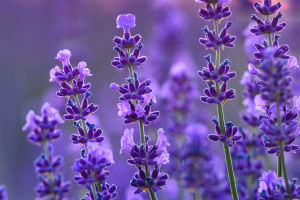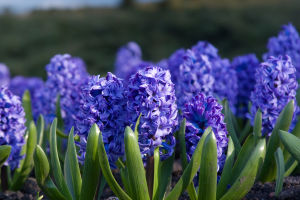
Lavender, scientifically known as Lavandula, is a well-known herb that has captivated the hearts of many with its pleasant fragrance and delicate purple flowers.
But lavender offers more than just a lovely aroma—it has a rich history of uses in aromatherapy, culinary arts, cosmetics, and even home décor.
In this article, we will explore the fascinating world of lavender, its cultivation, and the many ways it can be used to enhance our lives. Whether you're a seasoned lavender enthusiast or just beginning to explore its benefits, this guide is sure to offer some valuable insights.
Origins and Cultivation: Where Does Lavender Come From?
Lavender is native to the Mediterranean region, stretching from Spain and Portugal to the tropical regions of Africa and India. Over the centuries, it has spread across the globe, with cultivated varieties appearing in various countries. Today, lavender can be found in many parts of the world, France’s Provence, and even Japan's Hokkaido.
There are several species of lavender, each with unique qualities. The most famous is Lavandula angustifolia, also known as true or English lavender, prized for its high oil yield and superior quality. This variety is commonly found in the UK, Bulgaria, and Australia. Additionally, hybrid varieties, a cross between narrow-leaved and broad-leaved types, have become the most widely grown lavender for commercial use due to their high oil content and fragrance.
Lavender Varieties: Which One Should We Choose?
When selecting lavender for specific purposes, it's essential to know the differences between the various types. Here's a quick breakdown:
True Lavender (Lavandula angustifolia): Known for its strong fragrance and high-quality essential oils, this variety is ideal for therapeutic uses like skin treatments and relaxation.
Broad-Leaved Lavender (Lavandula latifolia): While its oil yield is lower, this variety is often used in landscaping and ornamental gardens due to its wider leaves and fragrant blooms.
Hybrid Lavender (Lavandula x intermedia): A crossbreed that combines the best traits of true and broad-leaved lavenders. Its high oil yield and rich fragrance make it the most common type for perfumes, soaps, and other beauty products.
Lavender's Many Uses: From Tea to Therapeutic Benefits
Lavender is a versatile herb that can be used in a wide range of ways. One of the most popular uses is in aromatherapy, where its calming scent helps alleviate stress, anxiety, and insomnia. But lavender isn’t just for the senses—it has several culinary and health-related applications:
Culinary Uses: In the kitchen, lavender can be used to add a unique flavor to desserts, such as lavender-infused cookies or cakes. Lavender can also be used in savory dishes, particularly in Mediterranean cooking. It pairs wonderfully with herbs like rosemary and thyme to create the iconic "Herbes de Provence" seasoning mix.
Lavender Tea: Lavender flowers can be brewed into a soothing tea that helps with relaxation and digestion. It’s especially popular for winding down before bed. The sweet floral flavor is a gentle, calming experience.
Aromatherapy and Essential Oils: Lavender essential oil is often used in diffusers to create a tranquil atmosphere at home. Its antiseptic properties make it a popular choice for skin care products, helping to treat acne and reduce inflammation.
Practical Uses: Lavender Around the Home
Lavender’s uses extend beyond the kitchen and wellness routine. Its charming flowers can be dried and used in a variety of ways around the house. For example:
Lavender Sachets: Lavender flowers can be placed in small cloth bags and used as sachets to keep closets and drawers smelling fresh. The natural scent helps repel insects and moths.
Home Décor: Dried lavender can be used to make wreaths, flower arrangements, or potpourri to decorate your living space. It adds a rustic, calming touch to any room.
Lavender Honey: The nectar of lavender flowers is used to produce lavender honey, which is often found in Mediterranean countries. This type of honey has a mild, sweet flavor and can be enjoyed in teas or on toast.
Lavender's Health Benefits: A Natural Remedy
Lavender has long been recognized for its medicinal properties. In addition to its use in aromatherapy, it also has several health benefits:
Relaxation and Stress Relief: Lavender oil is often used in massages or added to baths to relieve tension and promote relaxation. Its calming effects help lower stress levels and can even help with sleep disorders.
Antiseptic Properties: Lavender oil is known for its antiseptic qualities, making it useful for treating small cuts and burns. It can be applied topically to the skin to reduce inflammation and speed up healing.
Digestive Aid: Lavender tea is often used as a natural remedy to relieve digestive discomfort, such as bloating or indigestion. It helps to relax the muscles in the stomach and ease digestive distress.
Embrace the Power of Lavender
Lavender isn’t just a beautiful flower—it’s a versatile herb packed with benefits that can enhance many aspects of our lives. From its calming aroma to its many uses in cooking, wellness, and home décor, lavender offers endless possibilities. Whether you’re using it to unwind, create delicious dishes, or add a touch of charm to your home, lavender has the power to uplift and soothe.
Have you tried lavender in any form? Whether you’re adding it to your evening routine or experimenting with lavender-infused recipes, we'd love to hear how it has made a difference for you. Share your lavender experiences with us—let's inspire each other to make the most of this remarkable herb!
Feel free to reach out if you’d like more creative ideas or practical tips on how to enjoy lavender!
Unlocking the Potential Benefits of Lavender #food#lavender
Video by Daily Morsels


